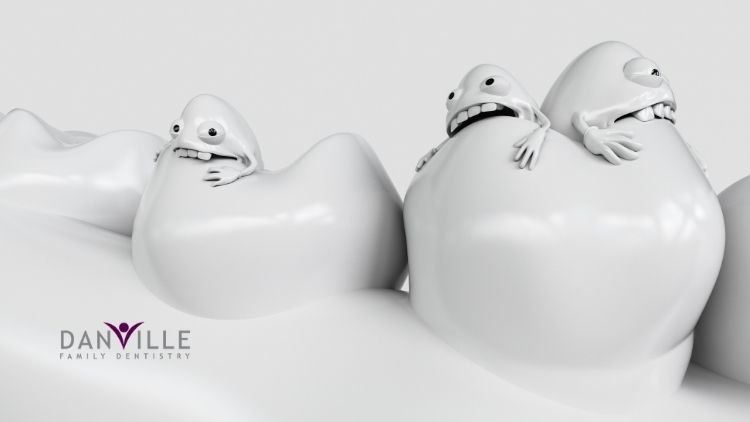Hidden sugar in foods lead to tooth enamel erosion. Here’s how.
If a nutrition label says “sugar-free” on food, it just means that zero table sugar is added. Other types of sugar such as fruit, grape, milk, or malt sugar are sometimes included. They lead to tooth decay in the same way as ordinary table sugar, though to a lesser extent.
Sugar doesn’t damage your teeth directly. However, bacteria consume sugar first, which breaks down the sugar into acids. The acids then attack the tooth and ultimately lead to tooth decay.
Typically, there’s a neutral pH value in the mouth between 6 and 7. Foods containing sugar cause this pH value to temporarily drop sharply to acidity, and the values change to between 5 and 4. This releases minerals from your tooth enamel below. The saliva slowly neutralizes the acids again, and then the enamel regenerates.
If you eat or drink something sweet throughout the day, this leads to a recurring acid attack on the teeth. Those who want to protect their teeth avoid snacking too often in between.
What Does Sugar Have to Do with Tooth Enamel Erosion?
The American Heart Association (AHA) states the maximum amount of sugars you should eat per day are:
- Women: 25g (about 6 teaspoons or 100 calories)
- Men: 37.5g (about 9 teaspoons or 150 calories)
We know that many products contain a lot of sugar and many products contain hidden sugars. But what about everyday foods like natural yogurt or canned fruit? There are sugar traps here that we don’t even notice.
- Pickles
Sugar isn’t added to all pickles, but labels should be checked because sugar is a popular preservative. It’s true, a 100g portion of pickles can hide up to 5g of sugar.
- Natural yogurt
Something with an “all-natural” label and a neutral taste should mean no sugar was added, right? Unfortunately, not. Make sure to check the ingredients list because you usually find 3-6g per 100g of yogurt. Consider organic yogurts that actually contain no sugar.
- TV Dinners and Ready-Made Meals
Ready-made meals are real sugar bombs, which really isn’t a surprise. One TV dinner can contain a whopping 20g of sugar per 100g. But who only eats 100g of it? In fact, in a typical serving of 300g for a typical lunchtime meal, there is already 60g of sugar.
- Cereal
Cereal manufacturers love to advertise how nutritious it is to start each morning with a healthy, complete breakfast. However, they prefer to hide the high sugar content. Up to 8g of sugar can be found in 100g of breakfast cereal and even more for cereals with a chocolate coating.
- Coleslaw
This one might sound weird. Pre-made foods like bags of salads or dressings have lots of extra sugars. Products like potato salad and coleslaw, for example, can have lots of extra sugar and preservatives that make them tasty but bad for your teeth.
The best prevention against tooth erosion is a healthy diet that follows the guidelines of the AHA. Keep in mind that canned fruits and vegetables also contain extra sugars that can cause plaque build-up and bacteria. Plus, pre-made soups and sauces also include excessive sugar that can be limited if you make the dishes yourself.
More than bad for your teeth …
Hidden sugars in your food aren’t only bad for your health in general, but they’re also bad for your dental health. Knowing how to read food labels can help you avoid tooth erosion and future visits to the dentist.
Is it time for your next dental checkup? Call the smile specialists at Danville Family Dentistry at 317-745-4400 today.
Are you on Facebook? We are, too! Let’s be friends!
Disclaimer: The information included in this article is for educational purposes only. It should not be used as a substitute for professional medical advice, diagnosis or treatment.


 (317) 745-4400
(317) 745-4400 info@danvilledentalcare.com
info@danvilledentalcare.com